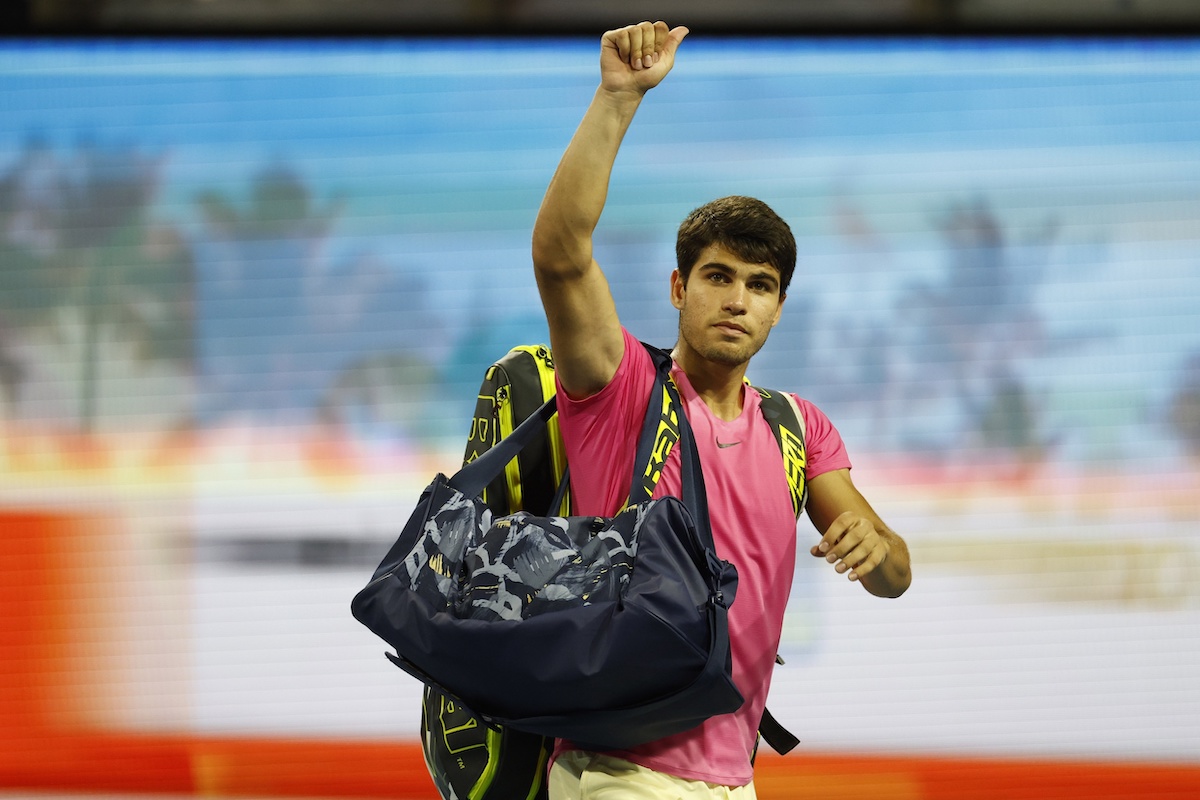The tennis world has long been defined by its traditional Grand Slam tournaments, ATP and WTA tours, and other historic competitions. Yet in recent years, big-money exhibitions, bankrolled by massive investments from new markets like Saudi Arabia, are becoming increasingly prominent. One such example is the Six Kings Slam, an exhibition event that has gained global attention for its eye-watering prize pool and elite field of players.
This trend raises the question: are these lucrative exhibitions the future of tennis? Adding fuel to the conversation is the players’ growing frustration with the relentless length of the tennis season and the packed tour schedule.
The Rising Appeal of Big Money Exhibitions
The Six Kings Slam, currently ongoing in Saudi Arabia, exemplifies a broader shift in sports towards events that focus less on tradition and more on financial incentives. This tournament, like others in the region, reflects Saudi Arabia’s broader push to assert itself as a key player in the global sports market. With events like the LIV Golf Tour, Saudi-backed soccer signings, and high-stakes boxing matches, the kingdom has repeatedly demonstrated its willingness to invest heavily in sports to raise its international profile.
For tennis players, the allure of these exhibitions is clear. Events like the Six Kings Slam offer a way to earn substantial sums of money in a less grueling and more relaxed environment. Unlike ATP or WTA events, exhibitions don’t carry the same pressure to accumulate ranking points, and players often face less physical and mental fatigue. At a time when top players like Iga Swiatek and Novak Djokovic have publicly expressed concerns about the length of the tennis season, these exhibitions can be a welcome reprieve.
Players’ Complaints About the Length of the Season
One of the biggest criticisms players have voiced in recent years is the packed tennis calendar, which spans nearly the entire year with little room for recovery. The ATP and WTA seasons typically start in January and run until November, leaving only a brief offseason for rest and rehabilitation. This relentless pace has led to frequent injuries and burnout, with many players struggling to maintain peak performance over such an extended period.
Novak Djokovic, a vocal critic of the demanding schedule, has pointed out how physically and mentally exhausting it is to perform at the highest level week after week. Andy Murray echoed similar concerns, calling for more breaks between tournaments and a reevaluation of the calendar. Even rising stars like Carlos Alcaraz have acknowledged the toll that playing deep into major tournaments while juggling the rest of the tour schedule takes on their bodies and minds.
Given these complaints, exhibitions like the Six Kings Slam are becoming an attractive option for players looking to balance their health with their careers. These events allow them to play high-quality tennis while avoiding the strain of the regular tour schedule. For example, participating in a single exhibition match in Saudi Arabia can yield higher payouts than winning a regular ATP 250 or 500 event—and in far less time.
A New Financial Paradigm
The financial incentives of big-money exhibitions are undeniable. Traditional tournaments, even at the ATP and WTA level, often struggle to match the prize pools offered by these privately funded events. The Six Kings Slam offers millions in appearance fees and prize money, far surpassing the rewards of most non-Slam events. This trend could further complicate the traditional tour model, where players must compete in numerous tournaments throughout the year to maintain their ranking, but may not see financial returns that justify the intense physical demands.
For players near the end of their careers, or those frequently grappling with injuries, the benefits of such events are clear. They offer a chance to earn a significant paycheck without risking further physical deterioration. In a sport as physically punishing as tennis, this could extend careers and allow top players to continue engaging with fans even as they scale back from the regular tour.
The Potential Impact on Traditional Tournaments
While these exhibitions provide players with flexibility and financial reward, they also pose a potential threat to the traditional tournament structure. The ATP and WTA rely heavily on their regular calendar to maintain the competitiveness of their tours. If too many top players prioritize exhibitions over the standard tournament grind, there could be a dilution in the level of competition at smaller ATP and WTA events.
The concern is that the allure of these big-money exhibitions could pull top talent away from traditional events, especially in regions like Europe and North America, where tennis has historically been most popular. Grand Slam tournaments like Wimbledon, the French Open, and the US Open will likely remain prestigious, but smaller events may struggle to draw star power if players opt for high-payout exhibitions instead. This could erode the overall ecosystem of professional tennis, where ranking points and regular competition have always been key to determining the best players in the world.
Balancing Tradition and Modern Demands
Tennis is now at a crossroads. Players’ concerns about the length and intensity of the season have prompted calls for changes to the schedule and a better balance between competition and rest. However, the emergence of big-money exhibitions offers a different kind of solution—one where players can still showcase their talents and earn high paychecks without the physical and mental strain of competing week in and week out.
It’s possible that a dual system could emerge, where traditional tour events and exhibitions coexist. Players might compete in Grand Slams and select ATP or WTA events to maintain their rankings, but supplement their schedules with a few highly lucrative exhibitions in countries like Saudi Arabia. This model could allow players to maximize their earnings while still contributing to the competitive spirit of the sport.
However, this also raises questions about accessibility. Tennis has long been a sport where rising stars must work their way through the ranks by competing in numerous lower-tier events to earn points and recognition. If big exhibitions start to pull too much focus, it could hinder the development of young talent, as they may struggle to break into a sport increasingly dominated by money-driven appearances rather than pure competition.
The Evolution of Tennis
The Six Kings Slam in Saudi Arabia is a harbinger of a larger shift in professional tennis. With the rise of big-money exhibitions and ongoing player complaints about the rigors of the season, tennis is likely to see a transformation in the coming years. While these exhibitions offer short-term financial benefits and reduced physical strain, they also pose long-term challenges for the sport’s traditional structure.
The future may see tennis balancing its prestigious tournaments with a growing exhibition circuit, offering both players and fans new ways to engage with the sport. However, as this balance shifts, tennis must ensure that its core competitive values remain intact. Otherwise, the rise of big-money exhibitions could dilute the very spirit that has made tennis a global sport.
Main Photo Credit: Geoff Burke – USA TODAY Sports






